Overhead Door Company: Trusted Garage Door Experts in Lafayette, CO
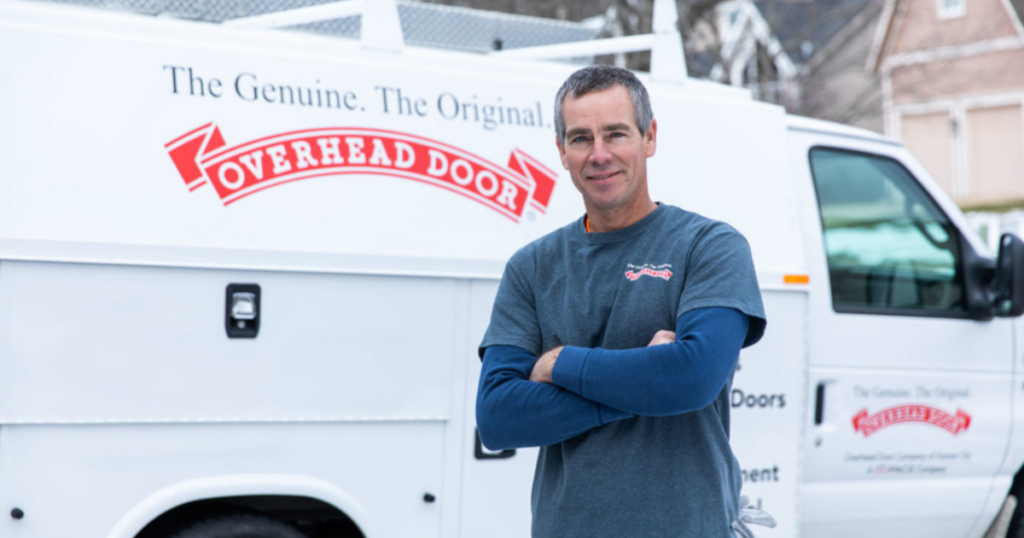
Looking for a reliable overhead door company? Alpha Garage Doors in Lafayette, CO, offers expert garage door installation, repairs, and maintenance. Contact us today! Your garage door keeps your home safe, adds curb appeal, and helps with insulation. But when it breaks, it’s a real hassle. Finding a trusted overhead door company in Lafayette, CO, is key. Whether you need a new door, a quick fix, or regular maintenance, experts keep it working smoothly. Imagine a garage door that opens quietly and never gets stuck. A well-maintained door makes life easier and keeps your home secure. If you’re in Lafayette, CO, now’s the time to call trusted professionals. Don’t wait for small issues to get worse. Get expert help today and keep your garage door in top shape! What Services Does an Overhead Door Company Provide Finding the right overhead door company in Lafayette, CO, means choosing experts who offer a full range of services. A top-rated garage door company provides installation, repair, maintenance, and emergency services to keep your garage door in top shape. 1. Garage Door Installation Professional garage door installation makes sure the door works smoothly and lasts a long time. Good companies offer different materials like steel, wood, aluminum, and fiberglass to fit any home and budget. A properly installed garage door improves security, looks great, and helps prevent future repair problems. 2. Garage Door Repair Garage doors wear out over time, causing problems like broken springs, stuck tracks, or faulty openers. Dented or damaged panels can also affect how the door works. A reliable garage door repair service can fix these issues quickly, making sure the door is safe and working properly again. 3. Garage Door Maintenance Regular maintenance helps a garage door last longer and prevents costly repairs. Checking parts, adding lubricant, and making small adjustments keep it running smoothly. Simple upkeep stops big problems before they happen, saving time and money while making sure the garage door works well every day. 4. Emergency Garage Door Services A broken garage door can be unsafe and frustrating. Many companies offer 24/7 emergency repairs for sudden problems like snapped springs or stuck doors. Fast service ensures the garage door works again as soon as possible, keeping homes safe and making life more convenient. How Much Does Garage Door Repair Cost in Lafayette, CO Garage door repair costs vary based on the issue, labor, and parts needed. On average, homeowners in Lafayette, CO, can expect to pay anywhere from $150 to $600, depending on the type and complexity of the repair. For accurate pricing, it’s best to get a professional inspection. A reputable overhead door company in Lafayette, CO provides free estimates and transparent pricing. What Are the Signs You Need a Garage Door Replacement Replacing your garage door is a significant investment, but sometimes it’s the best solution for security and efficiency. If your door is outdated, inefficient, or frequently breaking down, it may be time for a new one. Frequent Repairs If you’re always fixing your garage door, replacing it might be the smarter choice. Constant repairs mean worn-out parts, and costs can add up fast. A new garage door saves you money over time while improving security, convenience, and the look of your home. Loud Noises Grinding, screeching, or loud rattling noises usually mean worn-out parts like rollers, hinges, or springs. Ignoring these sounds can lead to bigger, more expensive problems. If your garage door is getting noisier, it may be time to replace it and bring back quiet, smooth operation. Visible Damage Dents, cracks, or rusted panels don’t just look bad, they also weaken your garage door. A damaged door can be less secure and may lower your home’s value. Replacing it gives your home a fresh look, improves security, and ensures your garage door works properly every time. Poor Insulation If your garage feels too hot in summer or too cold in winter, your door’s insulation might not be doing its job. Worn-out seals and outdated materials let air in, making heating and cooling more expensive. A well-insulated garage door keeps your space comfortable and energy-efficient. Slow or Unresponsive Operation If your garage door opener is slow or unresponsive, it could mean the motor, springs, or sensors are wearing out. A sluggish door is frustrating and unreliable. If troubleshooting doesn’t help, upgrading to a new garage door and opener can bring back smooth and dependable performance. How to Choose the Best Overhead Door Company With multiple options available, finding the best overhead door company in Lafayette, CO, requires careful consideration. Look for experience, reputation, service offerings, and pricing before making a decision. Experience & Expertise Go with a garage door company that has years of experience and trained technicians. Skilled pros can handle repairs, installations, and maintenance the right way. A well-established company knows how to fix problems fast and keep your garage door working smoothly for a long time. Customer Reviews & Ratings Check online reviews to see what customers say about a garage door company. Good ratings and happy reviews mean reliable service, while bad reviews can be a red flag. Looking at Google, Yelp, or the company’s website helps you find a trustworthy garage door expert. Service Guarantee A solid guarantee or warranty shows that a garage door company stands behind its work. Look for a business that offers warranties on parts and labor. This means you can trust the quality of repairs, knowing they’ll fix any issues if something goes wrong later. Emergency Services Garage door problems can happen anytime, so picking a company that offers 24/7 emergency repairs is a smart choice. Whether your garage door won’t open at night or breaks on a weekend, having a reliable team available anytime gives you peace of mind and quick service. How Often Should a Garage Door Be Serviced Routine maintenance keeps your garage door in optimal condition. Experts recommend servicing your garage door at least once a year to ensure smooth operation and prevent costly repairs. Lubricate
Metal Roll Up Garage Doors: Features, Benefits & Installation Tips You Need to Know
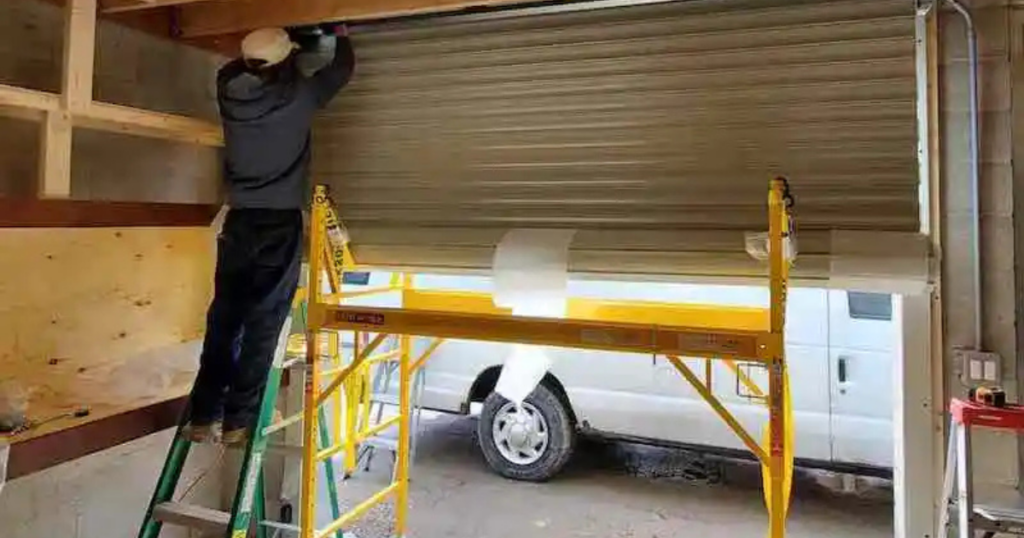
Metal roll up garage doors have become popular for residential and commercial properties. They are designed to offer security, convenience, and aesthetic appeal unlike traditional garage doors, which swing or slide open, roll-up doors open vertically, allowing for more efficient use of space. This design is particularly advantageous in areas with limited driveway space, as it does not require additional room for the door to swing out. These doors are made from strong metals like steel and aluminum, offering durability and long-lasting performance. They come in different styles and finishes, giving homeowners and business owners plenty of options to match their property’s look. If you’re considering an upgrade or need garage door repair in Broomfield, CO, metal roll up garage doors are a practical and stylish choice. This article will cover the key features, benefits, metal types, installation steps, maintenance tips, and costs. Learning about these details lets you decide if metal roll up garage doors are the best option for your needs. Key Features of Metal Roll Up Garage Doors Metal roll up garage doors have several standout features that enhance their functionality and appeal. Here are some key attributes to consider: Space Efficiency Metal roll up garage doors save space by rolling into a compact coil, making them perfect for garages with limited room. Durability Built with tough materials, these doors resist harsh weather, rust, and dents, maintaining their look and function over time. Security Features Metal roll up doors offer advanced locks, heavy-duty latches, and optional alarms, providing strong security for property owners. Customization Options These doors come in various colors, finishes, and designs, letting you match your garage to your home’s style. Insulation Options Insulated roll up doors help regulate temperature, cut energy costs, and keep garages comfortable for storage or workspaces. By understanding these key features, property owners can better appreciate the advantages of investing in metal roll up garage doors. Advantages of Choosing Metal Roll Up Garage Doors Choosing metal roll up garage doors has many benefits that can positively impact residential and commercial properties. Here are several advantages to consider: Low Maintenance Metal roll up doors need little upkeep, occasional cleaning with soap and water, and regular checks to keep them looking and working great. Enhanced Security Strong metal construction and reinforced locks make roll up garage doors hard to break into, offering excellent security for property owners. Long Lifespan With proper care, metal roll up doors last decades, making them a cost-effective, durable option compared to other materials. Versatile Applications Perfect for homes or commercial spaces, metal roll up doors work well in garages, warehouses, and other settings needing secure access. Aesthetic Appeal Available in many styles and finishes, these doors boost curb appeal, offering modern and traditional design options. With these advantages in mind, it’s clear that metal roll up garage doors are not just a functional choice; they also contribute to a property’s overall value and security. Types of Metal Used in Roll Up Garage Doors Choosing the right metal for roll up garage doors is important because each type offers unique benefits. Here’s a quick guide to help you decide on the metal used in roll up garage doors: Steel Strong and tough, it is one of the most popular choices. It resists dents, offers great security, and lasts a long time. Aluminum Lightweight and rust-resistant, aluminum works well in coastal areas. It’s easy to maintain and can be customized in different colors and designs. Galvanized Steel This type of steel has a protective zinc coating, which makes it resistant to rust and moisture. It’s a great option for areas with high humidity or commercial use. Stainless Steel It offers the best protection against rust and has a sleek and modern appearance. It’s perfect for places with heavy use or exposure to harsh weather. Understanding the types of metal used in roll up garage doors can help you choose the best option for your home or business. Whether you need durability, rust resistance, or a stylish design, there’s a metal that fits your needs. Installation Process for Metal Roll Up Garage Doors Installing metal roll up garage doors requires careful planning and execution to ensure they function correctly and safely. 1. Preparation Measure the garage opening accurately and clean the area. Remove old doors to ensure the new roll up garage door fits and functions properly. 2. Assembling the Door Follow the manufacturer’s instructions to assemble the door, roll up mechanism, tracks, and hardware. Secure all parts tightly to prevent future issues. 3. Mounting the Tracks Install vertical and horizontal tracks, ensuring they are leveled and aligned. Use a level to help achieve smooth operation for the door. 4. Installing the Door Lift and mount the door into the tracks. Assistance is recommended as metal roll up doors can be heavy and challenging to handle alone. 5. Final Adjustments Adjust tracks, spring tension, and alignment to ensure the door opens and closes smoothly. Test for proper functionality before completing the installation. 6. Safety Checks Test the automatic reverse feature, check locks, and inspect all parts to ensure the roll up door operates safely and reliably. While installing metal roll up garage doors can be a DIY project, many property owners choose to hire professionals like Alpha Garage Doors for reliable and optimal results. Maintenance Tips for Long-Lasting Metal Roll Up Doors Regular maintenance is essential to ensure that metal roll up garage doors remain functional and aesthetically pleasing for years. Here are several maintenance tips to consider: By following these maintenance tips, property owners can ensure that their metal roll up garage doors remain in top condition, providing security and convenience for years to come. Cost Considerations: Are Metal Roll Up Garage Doors Worth It? Metal roll up garage doors offer durability, security, and long-term value, but it’s essential to understand the costs involved. The initial price varies based on material and size, ranging from $800 to $3,000, excluding installation. Steel doors are typically more affordable, while stainless
What to Do With Old Doors: Creative Repurposing Ideas You Can’t Miss!
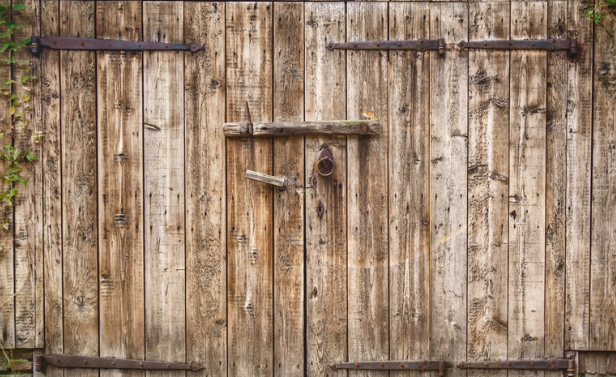
Old doors don’t have to end up in the trash! They’re full of potential and can become amazing projects for your home. Why not turn them into something new and useful instead of getting rid of them? Homeowners and DIY lovers are finding exciting ways to turn old doors into creative and repurposing pieces. From transforming them into one-of-a-kind furniture to incorporating them into stunning home decor, the possibilities are endless and surprisingly simple! In this comprehensive guide, we will explore a wide range of creative ideas for giving new life to your old doors. Whether you’re looking to add a touch of rustic charm to your living space or create a practical and eye-catching piece of furniture, we’ve got you covered. Get ready to unleash the hidden potential of your old doors and embark on a journey of sustainable, eco-friendly, and truly remarkable transformations. Benefits of Repurposing Old Doors Repurposing old doors is not only a fun and creative project but also an excellent way to add character and charm to your home. By breathing new life into these timeless pieces, you can create something unique, save money, and reduce waste, all while adding a personal touch to your space. Here are some of the key advantages of repurposing old doors: Eco-Friendly By repurposing old doors, you’re reducing waste and contributing to a more sustainable future. Instead of sending these materials to the landfill, you’re giving them a new purpose that aligns with the principles of the circular economy. Unique and Personalized Each old door is unique with its history, character, and imperfections. By repurposing them, you can create one-of-a-kind pieces that reflect your style and add a touch of character to your home. Cost-Effective Repurposing old doors is often a more budget-friendly option compared to purchasing brand-new furniture or decor items. You can stick to your budget and still get the style and functionality you want. Preservation of History By giving new life to old doors you’re preserving a piece of history and honoring the craftsmanship of the past. This can bring a touch of nostalgia and charm to your home. Increased Home Value Incorporating repurposed old doors into your home can increase its overall value as they add a unique and desirable element to the property. Creative Repurposing Ideas for Old Doors Old doors might seem like they’ve outlived their purpose, but they can be so much more than just something to throw away. With a little creativity, they can become beautiful and useful pieces that bring a fresh, personal touch to your home. Here are some fun and inspiring ideas to get you started in repurposing old doors: DIY Projects Using Old Doors Turning Old Doors into Furniture Pieces Using Old Doors for Home Decor Outdoor Uses for Old Doors Selling or Donating Old Doors If you have old doors that you don’t plan to repurpose yourself, consider selling or donating them to others who may find them useful. This not only helps reduce waste but also supports the circular economy and allows your old doors to find a new purpose. Here are some options to consider: Safety Tips for Repurposing Old Doors When repurposing old doors, it’s important to prioritize safety. Here are some tips to keep in mind for repurposing old doors: Frequently Asked Questions How can I upcycle a front door? Upcycling a front door can be as simple as turning it into a stylish headboard, a rustic dining table, or a decorative garden gate. With a little sanding, painting, or staining, you can transform it into a unique piece for your home or outdoor space. What are the best ways to use old cabinet doors? Old cabinet doors can be repurposed into decorative chalkboards, serving trays, or wall art. Add hooks to turn them into key holders or small shelves to make functional pieces for your home. How do I make an old exterior door look new again? To give an old exterior door a fresh look, start by cleaning it thoroughly and sanding off any rough spots. Then, apply a fresh coat of paint or stain and add new hardware for an updated polished appearance. What is the best way to sand an old door? Sanding an old door is easy with the right tools. Use medium-grit sandpaper to remove old paint or varnish, then switch to fine-grit sandpaper for a smooth finish. Make sure to wipe down the surface thoroughly before you start painting or staining. What can I do with an unfinished door? An unfinished door can be turned into a rustic table, a stylish room divider, or even a unique bench. You can also paint or stain it to match your decor and use it as a focal point in any room. Conclusion Discovering what to do with old doors opens up a world of creative possibilities. At Alpha Garage Door, we believe old doors hold incredible potential, not just for creative upcycling but for transforming your home’s style. Whether you’re inspired to repurpose them or need expert garage door repair, we are here to help you every step of the way. Repurposing old doors is a great way to add character and charm to your space while being eco-friendly. Whether you’re creating unique furniture or decorative features, the possibilities are endless. And if you’re dealing with a broken garage door and unsure where to start, we offer fast and reliable garage door repair in Broomfield, CO to get your home back on track. At Alpha Garage Door, we are more than just a garage door contractor in Broomfield, CO but we’re your partners in maintaining a safe, stylish, and functional home. Whether you need professional repairs, a new installation, or just want to explore creative ideas, we are ready to assist. Call us today to schedule a service or consultation and experience the Alpha difference! End Note Alpha Garage Door is your first-choice, trusted partner for all your garage door needs, including expert garage door repair
LiftMaster Garage Door Opener Parts & Accessories – Lafayette, CO, Complete Guide
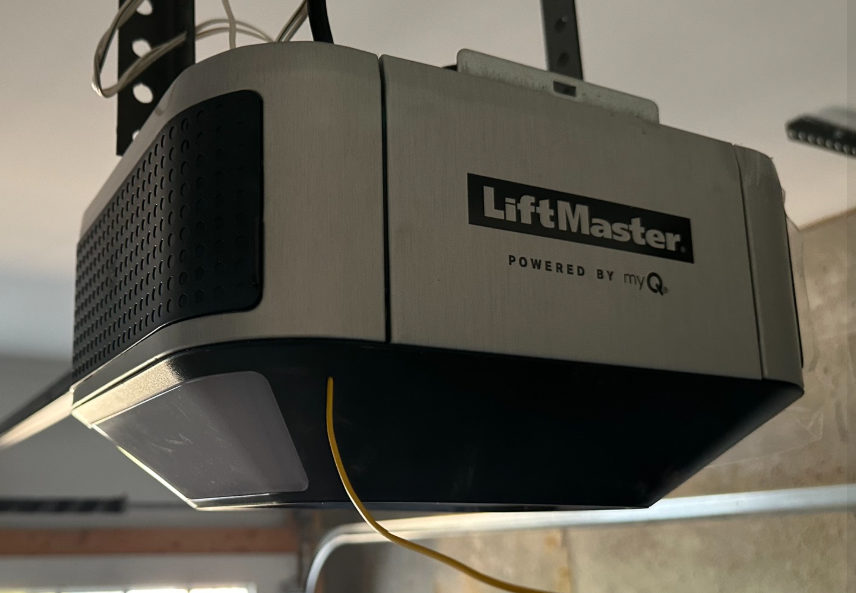
Looking for parts or accessories for your LiftMaster Garage Door Opener in Lafayette, CO? Check out our complete guide for replacements and upgrades. Your garage is more than just a place to park your car—it’s a gateway to convenience and security, and the LiftMaster garage door opener ensures both cutting-edge features and unmatched reliability. Whether you’re looking for quiet operation, heavy-duty performance, or seamless smart home integration in Lafayette, CO, LiftMaster has a solution tailored to your needs. This guide is your go-to resource for all things LiftMaster, covering everything from robust chain drives to space-saving wall-mounted systems. Dive into the details of MyQ technology, explore top accessories, and learn how to maintain your opener for years of worry-free performance. Ready to unlock the next level of garage functionality? Let’s get started! Enhance Your Garage Experience with LiftMaster Designed for Residential and Commercial Use LiftMaster openers are tailored for versatility, catering to the unique demands of homeowners and businesses alike. Residential models prioritize quiet and smooth operation, while commercial-grade options excel in handling heavier, high-traffic doors. Whether you’re seeking reliability for a bustling business or comfort for your home, LiftMaster openers deliver exceptional performance in every environment. Smartphone-Enabled Convenience LiftMaster’s MyQ technology revolutionizes garage access by integrating smartphone control. With the tap of a button, you can open, close, and monitor your new garage door remotely. This technology adds unparalleled convenience, allowing you to schedule operations, receive activity notifications, and share access with family or trusted individuals. Quiet and Reliable Performance LiftMaster’s belt drive systems are engineered for ultra-quiet operation, making them an excellent choice for attached garages. With reinforced belts and vibration-reducing components, these systems are as durable as they are discreet. Chain drive systems provide unmatched strength and reliability for heavier doors or commercial spaces, ensuring consistent performance over time. Key Reasons to Choose LiftMaster Superior Durability and Performance LiftMaster openers are built to effortlessly handle daily use. Featuring powerful motors and high-quality materials, they provide consistent, smooth operation even under heavy loads. These openers excel in demanding environments, ensuring your new garage door operates seamlessly for years. Advanced Safety and Security Features Security is a hallmark of LiftMaster products. With rolling code technology, automatic locks, and safety sensors, these openers protect your property from unauthorized access and potential hazards. The auto-reverse feature adds another layer of safety by preventing the door from closing if it detects an obstacle. Seamless Smart Home Integration Compatible with popular platforms like Alexa, Google Assistant, and Apple HomeKit, LiftMaster easily integrates into smart home setups. This compatibility allows you to include your garage door opener in automated routines, such as syncing with your lights or thermostat when arriving home. Exploring the LiftMaster Lineup Chain Drive Openers LiftMaster chain drive systems are known for their robust strength, perfect for heavy doors and high-use applications. Though slightly louder than belt drive models, they’re cost-effective and ideal for detached garages or industrial settings. Belt Drive Openers Belt drive openers offer a smoother and quieter operation, making them a favorite for residential garages. Their durable, reinforced belts minimize noise without compromising strength, providing long-lasting reliability for daily use. Wall-Mounted Openers Wall-mounted openers, or jackshaft systems, save ceiling space while delivering exceptional performance. These compact models are perfect for garages with unique layouts or limited overhead clearance. They offer both functionality and aesthetics. Features That Set LiftMaster Apart MyQ Smart Technology LiftMaster’s MyQ system enables remote control and monitoring of your garage door via a smartphone app. With real-time notifications and scheduling capabilities, you’re always informed about your garage’s status, no matter where you are. Battery Backup for Uninterrupted Access Power outages are no longer a concern with LiftMaster’s battery backup. This feature ensures your garage door remains operational even during electricity disruptions. It’s a vital addition for homes and businesses prone to power outages, offering peace of mind in emergencies. Automatic Garage Door Lock An automatic lock physically secures your garage door when closed, adding an extra protection against break-ins. This feature pairs perfectly with LiftMaster’s advanced electronic security, ensuring a comprehensive defense for your property. Safety Sensors for Accident Prevention To prevent accidents, safety sensors stop the door’s movement if they detect anything or anyone in its way. These sensors are essential for households with children or pets, providing a safe and worry-free experience. Rolling Code Technology for Enhanced Security LiftMaster openers use rolling code technology to generate a new code with every use. This safeguards against code theft, allowing only authorized users to control your garage door. Customization Options for LiftMaster Openers Adjustable Speed Settings Adjustable speed options allow you to customize how quickly your garage door opens and closes. This flexibility is particularly useful in commercial settings or for heavier doors, allowing you to balance safety and efficiency. Personalized Access Controls LiftMaster systems allow you to program unique access codes for family members, guests, or service providers. These codes can be managed through the MyQ app, giving you complete control over who enters your garage and when. Smart Lighting Integration LiftMaster openers often include smart lighting options, enabling you to program lights to turn on or off based on your garage door’s activity. This feature enhances visibility and security, especially in dimly lit areas or during nighttime use. Noise Reduction Upgrades LiftMaster offers accessories like sound-dampening rails and vibration-reducing mounts to minimize operational noise. These upgrades are ideal for homes with attached garages or bedrooms near the garage. Maintaining Your LiftMaster Garage Door Opener Routine Inspections and Lubrication Inspect the system periodically for signs of wear, such as loose bolts or frayed cables. Keep moving parts, like chains and rails, well-lubricated to reduce noise and friction and ensure a longer lifespan. Test Safety Features Regularly Frequently check the functionality of the safety sensors and auto-reverse mechanisms to ensure they operate as intended. During a test run, place an object in the door’s path to confirm the sensors respond appropriately. You can use any small item in your garage. Clean and Align Sensors
Smart Garage Door Opener – Features, Reviews, and Buying Guide in Lafayette, CO

Explore smart garage door openers with in-depth reviews and a complete buying guide. Find the perfect model for your home in Lafayette, CO, today! Think about how great it would be to never second-guess leaving the garage door open. A Smart garage door opener puts control at your fingertips, whether you’re at home or miles away. With features like remote access, real-time alerts, and voice commands, these devices are designed to blend security, convenience, and modern technology seamlessly. In Lafayette, CO, homeowners are upgrading to smart openers to simplify daily routines and protect what matters most. This guide covers everything you need to know—from picking the right model with advanced features like geofencing or app control to ensuring smooth installation and maintenance for long-lasting performance. If you’re ready to bring your garage into the future, keep reading for reviews, tips, and insights to help you choose the best smart opener for your home. Understanding Smart Garage Door Openers What is a Smart Garage Door Opener? A smart garage door opener connects to your home Wi-Fi network, enabling remote access and control via your smartphone or other smart devices. It integrates advanced features like voice commands, real-time alerts, and programmable schedules, revolutionizing how you interact with your garage. Key Benefits of Smart Garage Door Openers Enhanced Security Smart openers provide robust security through encrypted connections and real-time monitoring. Some models even feature cameras or motion sensors for added protection. With customizable alerts, you’ll know immediately if your garage door opens unexpectedly, giving you peace of mind wherever you are. Convenience and Control Say goodbye to traditional remotes. Thanks to smartphone apps and voice assistants like Alexa or Google Assistant, a smart garage door opener allows you to open, close, or monitor your garage door from anywhere. These systems also enable features like auto-close timers, ensuring your new garage door is never accidentally left open. Integration with Home Automation Smart openers smoothly integrate with other smart home devices, such as lights, security systems, and thermostats. This integration creates a cohesive ecosystem where your garage door opener enhances your overall home automation experience. Real-Time Notifications Receive instant alerts about your garage door’s status. Real-time updates inform you whether you’ve forgotten to close it or someone else has accessed it. Some systems also allow shared access with family or service providers, ensuring secure entry without physical keys. Energy Efficiency Today’s smart garage door openers are built to use very little energy, even in standby mode. With scheduling options and auto-close features, you can optimize energy use and reduce unnecessary power consumption. How to Choose the Right Smart Garage Door Opener Compatibility Before purchasing, check whether the smart opener is compatible with your existing garage door and smart home system. Most models list supported garage door types and smart device platforms, ensuring a seamless fit with your setup. Key Features Consider features like geofencing, video monitoring, and multi-user access. These options add value and enhance functionality. Ensure the opener supports secure encryption and automatic updates to protect against potential security threats. Installation While some smart garage door openers are simple enough for DIY installation, others may require professional setup. Consider the complexity of the process before deciding. Confirm that the mounting and wiring requirements match your existing setup if replacing an older system. Price Smart garage door openers vary from affordable models to luxury ones packed with advanced features. Set your budget and focus on the features that matter most to you. Keep in mind that higher upfront costs can often translate into better security and advanced capabilities. Customer Reviews Read reviews to gauge real-world performance and reliability. User feedback provides valuable insights into potential issues or standout features. Focus on products with consistent praise for ease of use, reliability, and customer support. Installation Guide for Smart Garage Door Openers Gather Your Tools and Materials Prepare essential tools such as a power drill, screwdriver, measuring tape, and level. Ensure you have all the components in the smart opener kit, such as mounting brackets, wiring, and the control unit. Disconnect the Power Before starting, turn off the power supply to your garage door opener to prevent accidents. Always verify that the power is fully disconnected before dealing with wiring. Remove the Old Opener If replacing an older system, carefully detach it following the manufacturer’s instructions. Take care to preserve any reusable brackets or wiring for the new installation. Install the Smart Opener Mount the new opener to the ceiling using the provided brackets. Ensure it is level and aligned with the new garage door for smooth operation. Secure the opener firmly to avoid vibrations or movement during use. Connect the Wiring Follow the wiring diagram in the instruction manual to connect the opener to the power supply and control panel. Pay special attention to the placement of safety sensors and ensure all connections are secure. Test the Opener Once installed, test the garage door opener to ensure it operates smoothly. Open and close the door several times to check for any issues. Adjust tension, alignment, or sensitivity settings as needed for optimal performance. Set Up the Smart Features Download the associated app and connect the opener to your home Wi-Fi network. Follow the on-screen instructions to complete the setup, enabling remote control, notifications, and other smart features. Maintenance Tips for Smart Garage Door Openers Regular Inspections Conduct routine inspections of the opener and garage door to spot wear, loose parts, or potential damage. Handling minor concerns early on can prevent major expenses and maintain smooth functionality. Lubrication Apply lubricant to the opener’s moving parts, such as chains, screws, or belts, to reduce friction and noise. Stick to the manufacturer’s guidelines regarding the lubricant type and how often to apply it. Clean the Sensors Safety sensors are vital for detecting obstacles. They must be kept clean and free of dust or debris to maintain proper functionality. Wipe the sensors carefully using a soft cloth, steering clear of harsh materials that could cause scratches. Test the Safety
Garage Door Opener Installation Checklist Lafayette, CO – Do It Right!
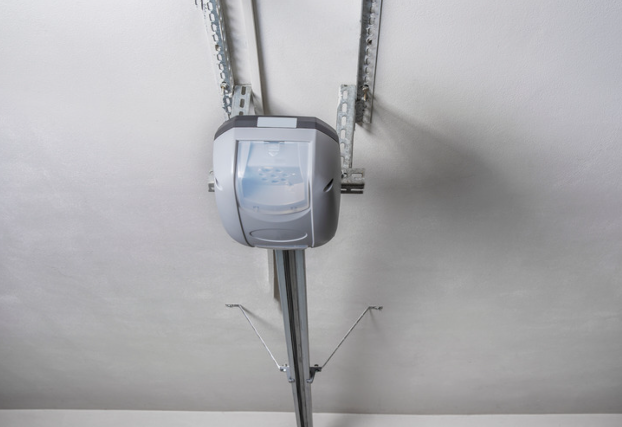
Use our comprehensive installation checklist to ensure your garage door opener is set up correctly. This handy guide in Lafayette, CO, will help you avoid costly errors. Installing a garage door opener is a practical upgrade that enhances the convenience and security of your home, but it requires precision and preparation. Whether you’re tackling it yourself or hiring a professional in Lafayette, CO, this garage door opener installation guide will walk you through every essential step. From gathering tools to aligning safety sensors, following a detailed checklist ensures a smooth installation and avoids costly mistakes. Choosing the right opener is just as important as proper setup. Whether you prefer a durable chain drive, a quiet belt drive, or a smart Wi-Fi-enabled system, your choice should match your garage’s needs and lifestyle. This blog provides all the tips, tools, and troubleshooting advice to help you install and maintain your garage door opener like a pro. Keep reading to ensure your installation is done right the first time! Tools and Materials You’ll Need Must-Have Tools Before starting the installation, gather the key tools, including a power drill, various screwdrivers, measuring tape, and a wrench set. These are essential for securing brackets, aligning rails, and ensuring accurate adjustments. Additionally, a level will be indispensable for maintaining proper alignment. Keep a hammer and pliers handy for minor adjustments or removing obstructions. Having all tools prepared in advance prevents interruptions during the process. Essential Safety Equipment Safety gear should always be noticed. Equip yourself with protective goggles to shield your eyes from debris and gloves for a firm grip and protection against cuts. A sturdy ladder is also essential, offering stability when working at heights. Before use, make sure the ladder is placed on a level surface and inspected for any signs of wear. Picking the Perfect Garage Door Opener Chain Drive: Rugged and Dependable Known for their robust construction, chain-drive openers are ideal for handling heavy garage doors and are often used in detached garages where noise is less of a concern. Even though chain drives are durable, they need regular upkeep to function properly. Applying grease to the chain now and then helps avoid excessive wear. Belt Drive: Quiet and Smooth Belt-drive openers are perfect for homeowners seeking silent operation. These openers use a flexible belt instead of a chain, making them nearly noiseless. They are slightly more expensive than chain drives but worth investing in attached garages or homes with nearby bedrooms. Screw Drive: Minimal Maintenance Due to their uncomplicated design, screw-drive openers feature a threaded steel rod and offer a reliable solution with minimal maintenance needs. These openers work efficiently in stable climates but may require occasional adjustments in areas with extreme temperature fluctuations. Direct Drive: Long-Lasting and Reliable Direct-drive openers are among the most advanced options available. With only one moving part, these openers reduce wear and operate with minimal noise. They’re an excellent choice for homeowners who prioritize longevity and simplicity in their garage door systems. Smart Garage Door Openers: Modern Convenience Ideal for tech-savvy individuals, smart garage door openers integrate with smartphones and home automation systems, enabling you to manage your garage from anywhere. Features like real-time alerts, scheduling, and voice control make these openers a great addition to modern homes. They often include enhanced safety features, such as motion detection and advanced encryption for security. How to Install a Garage Door Opener Step 1: Read the Manual and Prepare Begin by thoroughly reviewing the user manual. This step ensures you understand the assembly process and prevents common errors. Clear your workspace by removing obstacles and gathering all necessary tools and parts. A clutter-free area will enhance safety and efficiency. Step 2: Mount the Opener Mount the opener to the ceiling using the supplied brackets, ensuring it is aligned with the center of the garage door for seamless operation. Check the unit’s stability after installation. Tighten loose bolts and verify that the opener is level to avoid operational issues later. Step 3: Attach the Mounting Bracket Connect the mounting bracket to your new garage door. This bracket is crucial for linking the opener to the door, allowing for seamless movement. Confirm that the bracket is firmly attached and in line with the opener’s rail to prevent uneven door movement. Step 4: Install the Rail and Trolley Assembly The rail directs the door’s movement, and the trolley acts as the mobile part. Connect the rail to the opener and install the trolley system following the steps in the manual. Take time to ensure all parts are aligned correctly. Misalignment at this stage can result in uneven door operation or unnecessary strain on the motor. Step 5: Wire the Garage Door Opener Follow the provided wiring diagram to connect the opener to your garage’s electrical system. Pay special attention to the safety sensor wires and the wall-mounted control panel. Use cable ties or clips to keep wires organized and out of the way. This not only ensures safety but also gives your installation a professional finish. Step 6: Test and Fine-Tune Once installation is complete, test the opener to confirm proper operation. Open and close the new garage door several times to assess its performance. Make adjustments to the tension, alignment, or sensitivity settings as necessary. Test the safety sensors by placing an object in their path to confirm they function properly. Prioritizing Safety During Installation Ladder Usage and Stability A solid, well-maintained ladder is vital for safe installation. Always position it on a flat surface and ensure it extends high enough for comfortable access. Avoid leaning too far while on the ladder to reduce the risk of accidents. Having a second person act as a spotter can enhance safety. Protective Gear Is Essential Protective gear like gloves and goggles can prevent injuries from sharp edges, flying debris, or electrical sparks. These small precautions make a significant difference in overall safety. Even simple additions, like sturdy footwear, can protect you from falling tools or accidental slips. Check the Safety
Chamberlain Garage Door Opener – Advanced Features for 2024 in Lafayette, CO
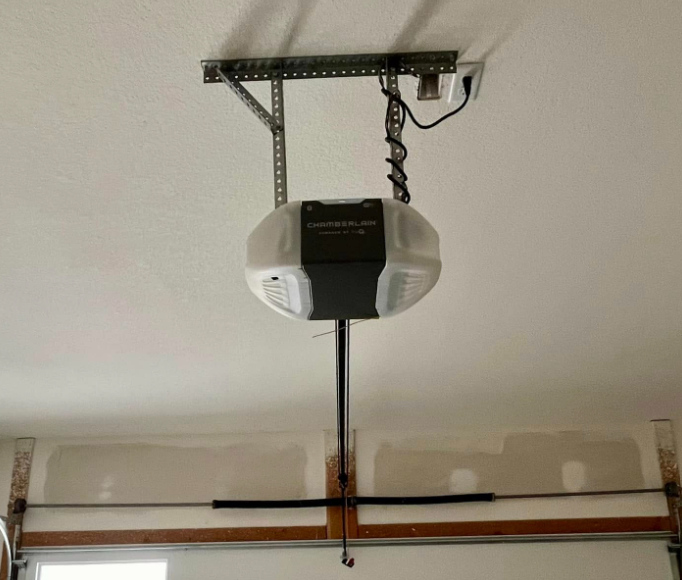
Discover why Chamberlain Garage Door Openers are the wise choice for 2024. Explore innovative features, including Wi-Fi and MyQ app integration in Lafayette, CO. It’s hard to overstate the importance of a reliable, smart garage door opener in today’s connected homes. The Chamberlain garage door opener is a standout choice for homeowners in Lafayette, CO, offering cutting-edge features like MyQ app integration, Wi-Fi connectivity, and enhanced security options for 2024. Whether you prioritize quiet operation, heavy-duty performance, or advanced smart home compatibility, Chamberlain delivers innovative solutions designed to fit your lifestyle. From ultra-quiet belt drives to durable chain models, Chamberlain’s lineup offers versatility paired with features like geofencing and real-time alerts for ultimate convenience. This blog explores why Chamberlain openers are a top pick for Lafayette homes and provides tips on choosing, maintaining, and upgrading to make the most of these advanced systems. Keep reading to find the perfect fit for your home! Key Components of Chamberlain Garage Door Openers Chamberlain garage door openers rely on several essential components working in harmony. Each part plays a crucial role in ensuring smooth, reliable operation. Drive and Worm Gear Kits The drive and worm gear kits are the heart of your opener’s mechanical system. They transfer motor power to the door, enabling smooth lifting and lowering. These gears may wear out with time and frequent use, resulting in jerky or inefficient operation. Replacing them as needed ensures long-term reliability and prevents motor strain. Safety Sensor Kits Safety sensors are a must-have for modern garage door openers. These devices detect obstacles in the door’s path and stop its movement to prevent accidents. Keeping these sensors clean and aligned is essential for ensuring they work correctly. If they become damaged, immediate replacement is necessary to maintain safe operation. Chain and Belt Drive Parts The chain and belt drives are critical for transferring motion from the motor to the door. Chains are durable, making them ideal for heavy doors or frequent use. Belts, on the other hand, are quieter and better suited for garages attached to living spaces. Regular inspection and timely maintenance of these parts prevent disruptions and ensure optimal performance. Light Sockets and Covers While often overlooked, light sockets and covers contribute to the safety and usability of your garage. Well-lit garages are essential for visibility and security, particularly at night. Replacing worn or damaged light fixtures enhances functionality and maintains the opener’s aesthetic appeal. Replacement Parts for Chamberlain Garage Door Openers Chamberlain openers are designed with specific replacement parts for each model, ensuring seamless compatibility and reliable performance. Parts for 1/4 HP and 3/4 HP Openers Chamberlain offers models with varying horsepower ratings to handle doors of different weights. Heavier doors require 3/4 HP openers, requiring heavy-duty components like reinforced gears and motor housings. For lighter doors, 1/4 HP models provide efficient performance with smaller, more compact parts. Whisper Drive Opener Components The Whisper Drive series is known for its ultra-quiet operation, making it a favorite among homeowners with attached garages. Key components include rubber belts, noise-dampening mounts, and vibration-reducing mechanisms. Replacing these parts when needed ensures the opener remains as quiet as the day it was installed. Chain Drive Parts Chain drive models are built for durability and heavy lifting. Components like chains, sprockets, and tensioners are designed to handle frequent use without compromising performance. Regular lubrication and timely replacement of worn parts keep these openers running smoothly. Belt Drive Parts Belt drive openers combine strength with quiet operation. Replacement belts, tension adjusters, and vibration dampers are essential for maintaining their performance. These components are especially important in homes where noise sensitivity is a concern, ensuring a peaceful environment. Enhancements and Add-Ons for Chamberlain Openers Chamberlain provides an array of accessories and upgrades to improve the functionality and versatility of its garage door openers. Garage Door Opener Arm Kits The opener arm connects the drive system to the door, enabling smooth and balanced movement. Over time, the arm may lose alignment or weaken, resulting in uneven operation. Replacing or upgrading the arm kit improves stability and enhances the door’s performance. Chain Spreaders and Idler Pulleys These components maintain proper chain tension and alignment in chain drive models. Worn or misaligned pulleys can lead to noisy or jerky operation, but replacing them restores smooth and efficient movement. Gear and Sprocket Assemblies Gear and sprocket assemblies transfer power from the motor to the drive system. Frequent use can wear out these parts, reducing efficiency. Regularly inspecting and replacing them ensures consistent power transfer and prevents motor damage. Screw Drive Couplers Screw drive openers rely on couplers to connect the motor to the drive mechanism. These small but vital components can crack or wear down with use. Replacing a faulty coupler ensures reliable performance and protects other components from unnecessary strain. Innovative Smart Features of Chamberlain Openers Chamberlain garage door openers are reliable and equipped with smart features designed to enhance convenience and security. These innovations make managing your garage door easier than ever, whether at home or away. MyQ Technology for Remote Control Chamberlain’s MyQ technology allows you to monitor and control your new garage door from anywhere using a smartphone app. With just a few taps, you can open or close the door, check its status, and receive real-time notifications about door activity. This feature is especially helpful for busy households or when you need to provide temporary access to service providers or family members. Seamless Smart Home Integration Many Chamberlain openers are compatible with popular smart home systems like Amazon Alexa, Google Assistant, and Apple HomeKit. This integration enables voice-activated commands, allowing you to manage your garage door without reaching for your phone. With smart home routines, you can even automate your opener to close the door at a specific time every night, adding an extra layer of security. Geofencing and Scheduling Some models offer advanced features like geofencing, which automatically open or close your new garage door based on location. This eliminates the need to fumble for remotes as
Why Choose Genie Garage Door Opener – Advanced Tech in Lafayette, CO Explained
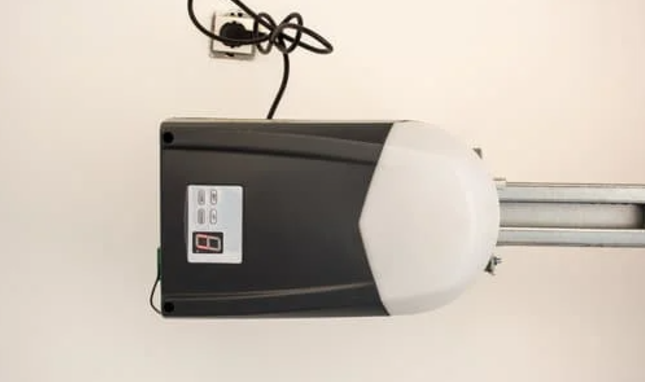
Learn why Genie Garage Door Openers in Lafayette, CO, are a favorite in 2024. Advanced features, durability, and user-friendly tech explained. Struggling with a noisy or unreliable garage door opener? For homeowners in Lafayette, CO, the Genie garage door opener stands out in 2024 as the ultimate solution, combining advanced features, smart technology, and unmatched durability. Whether it’s quiet operation, heavy-duty performance, or compact design, Genie offers models tailored to every need, making daily life easier and more secure. Genie’s innovative openers bring convenience and reliability to your garage, from Wi-Fi control and voice assistant compatibility to energy-efficient lighting and enhanced safety features. Keep reading to learn why Genie is the go-to choice for Lafayette homes and how to pick the perfect model for your setup! Genie’s Evolution and Pioneering Innovations For decades, Genie has earned the trust of being a leading name in the garage door market. Established in 1954, the company has consistently pushed the boundaries of what a garage door opener can do. From creating the first remote-controlled garage door openers to integrating today’s smart home technologies, Genie has a history of innovation. One of their most significant milestones was the introduction of rolling code technology. This groundbreaking feature enhanced garage security by ensuring that no two remotes could operate the same opener, preventing unauthorized access. Genie has continued to evolve, adapting to modern-day needs by incorporating Wi-Fi-enabled systems and seamless integration with voice control devices. Genie designs openers built for regular use and challenging conditions by emphasizing long-lasting performance and dependability. This mix of innovation and practicality has made them a top name in the industry. A Breakdown of Genie Garage Door Opener Models Genie’s lineup of garage door openers caters to various homeowner preferences, combining precision engineering with dependable functionality. Screw Drive Openers: Robust and Low Maintenance Genie’s screw drive openers are perfect for heavy-duty use. These models operate with a direct-drive mechanism, providing the strength needed for heavier garage doors. They’re also remarkably low maintenance, with fewer moving parts than other types, reducing wear and the need for frequent repairs. Belt Drive Openers: Quiet and Efficient For homeowners prioritizing peace and quiet, Genie’s belt drive models are the ideal solution. The belt mechanism minimizes noise during operation, making it suitable for garages attached to bedrooms or living areas. Additionally, these models provide smooth, vibration-free performance, enhancing the overall user experience. Chain Drive Openers: Durable and Affordable Chain-drive openers are the workhorses of Genie’s lineup. These models are built to last and can easily handle frequent, heavy use. While they are noisier than belt-drive models, they’re economical for detached garages or areas where sound isn’t a concern. Specialized and Compact Options Genie offers unique models for those with specific needs, such as wall-mounted openers that save ceiling space. Compact designs are also available for garages with limited headroom. These specialized options ensure every homeowner can find the perfect fit for their garage. Smart Features: Making Garage Doors Smarter Genie has embraced the smart home trend, equipping its openers with advanced features that simplify daily life while enhancing security. Wi-Fi Control for On-the-Go Convenience With Genie’s Wi-Fi-enabled openers, you can control your new garage door remotely through a smartphone app. This feature is especially useful for homeowners who frequently forget to close their garage door or need to grant temporary access to family members or service providers. Seamless Voice Control Integration Genie openers work effortlessly with popular voice assistants like Amazon Alexa and Google Assistant. With simple commands like “Close the garage door,” you can manage your door without lifting a finger. Enhanced Security Features By altering the access code with every use, rolling code technology ensures protection against unauthorized access. Additionally, motion-activated lights and real-time notifications provide extra layers of security, ensuring homeowners are always aware of their garage door’s status. Energy-Efficient Lighting Some models feature LED lighting that activates when the door is in use. This energy-efficient solution improves visibility and reduces electricity consumption, making it a practical addition to any smart home setup. Tips for Selecting the Right Genie Opener Choosing the right garage door opener involves understanding your specific needs and how Genie’s models cater to them. Garage Door Size and Weight Matter Heavier doors require stronger models like Genie’s screw or chain drive openers. For smaller, lighter doors, a belt drive opener provides sufficient power with the added benefit of quieter operation. Location Influences Your Choice If your garage is attached to your home, prioritize quiet operation with a belt-drive model. Chain-drive models offer durability at a lower cost for detached garages, where noise isn’t a concern. Consider Smart Features for Added Convenience Genie’s Wi-Fi-enabled models are a worthwhile investment for homeowners who value technology. They allow you to control and monitor your new garage door from virtually anywhere, ensuring peace of mind. Budget and Maintenance Preferences If budget is a concern, Genie’s chain drive models offer reliable performance at a more affordable price point. For minimal upkeep, screw drive models are a great choice due to their simplified mechanics. Installation and Care: Keeping Your Opener in Top Condition Proper installation and maintenance are essential to get the most out of your Genie garage door opener. Installation Essentials Routine Maintenance Tips When to Call a Professional While many maintenance tasks can be done yourself, a professional technician should handle more complex issues like motor replacement or electrical repairs. Genie’s authorized service providers are equipped to handle these tasks efficiently. Frequently Asked Questions about Genie Garage Door Opener Why is my Genie garage door opener not working? Your Genie garage door opener might not work due to dead remote batteries, power interruptions, or misaligned safety sensors. Start by replacing the remote’s batteries, checking the opener’s power source, and cleaning and aligning the sensors. If these steps don’t resolve the issue, there might be a problem with the motor or internal components that require professional servicing. Is there an app for Genie garage door opener? Yes, Genie offers the Aladdin Connect app
Understanding the Importance of Dock Levelers: What is a Dock Leveler and How Does it Work?
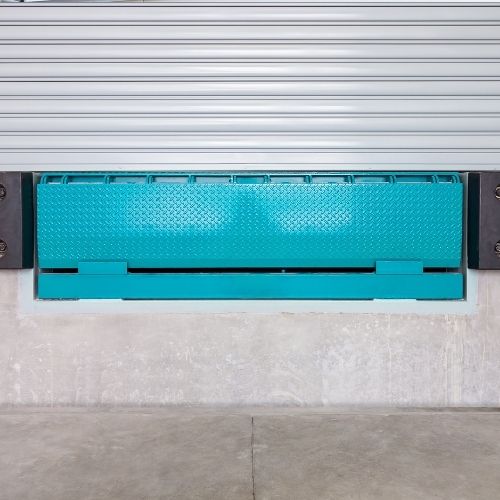
Dock levelers are an essential piece of equipment in the logistics and warehousing industry, playing a crucial role in the efficient loading and unloading of goods. These innovative devices bridge the gap between a truck’s trailer and the warehouse floor, ensuring a seamless and safe transfer of materials. Understanding the importance of dock levelers is crucial for businesses that rely on smooth supply chain operations. In this comprehensive article, we’ll delve into the world of dock levelers, exploring their purpose, types, and the mechanics behind their functionality. By the end of this guide, you’ll have a thorough understanding of why dock levelers are indispensable in modern logistics and how they can benefit your business. Importance of Dock Levelers in Logistics and Warehousing Dock levelers are the unsung heroes of the logistics industry, facilitating the smooth flow of goods and materials between trucks and warehouses. Without these essential devices, the loading and unloading process would be fraught with challenges, leading to delays, inefficiencies, and potential safety hazards. The importance of dock levelers in logistics and warehousing operations cannot be overstated. They play a crucial role in: By understanding the importance of dock levelers, you can ensure that your logistics and warehousing operations run smoothly, efficiently, and safely. What is a Dock Leveler? A dock leveler is a mechanical device installed at the loading dock of a warehouse or distribution center. Its primary function is to bridge the gap between the warehouse floor and the bed of a truck or trailer, allowing for the seamless movement of materials, equipment, and personnel during the loading and unloading process. Dock levelers come in various sizes and capacities, designed to accommodate different types of trucks and trailers. They are typically made of sturdy steel construction and feature a hinged platform that can be raised, lowered, or extended to match the height and position of the truck’s trailer. Types of Dock Levelers There are several different types of dock levelers available, each with its own unique features and benefits. The most common types include: Depending on your specific requirements, such as the size and type of trucks you typically handle, the volume of traffic, and the available space in your loading dock area, you can choose the dock leveler that best suits your needs. How Does a Dock Leveler Work? Dock levelers are designed to bridge the gap between the warehouse floor and the truck’s trailer, ensuring a smooth and safe transition for materials, equipment, and personnel. Here’s a step-by-step overview of how a dock leveler works: The specific mechanics of how a dock leveler works may vary slightly depending on the type of dock leveler (mechanical, hydraulic, or air-powered), but the underlying principle remains the same: to provide a stable and secure connection between the warehouse and the truck’s trailer, enabling efficient and safe material handling. Advantages of Using a Dock Leveler Implementing a dock leveler in your logistics or warehousing operations can provide numerous benefits, including: By leveraging the advantages of dock levelers, you can enhance the safety, efficiency, and productivity of your logistics and warehousing operations, ultimately improving your overall business performance. Common Issues and Maintenance of Dock Levelers Like any piece of equipment, dock levelers can experience various issues and require regular maintenance to ensure their optimal performance and longevity. Some common issues and maintenance considerations include: To address these issues and ensure the long-term reliability of your dock levelers, it’s essential to implement a comprehensive maintenance program that includes: By proactively maintaining your dock levelers and addressing any issues that arise, you can ensure the smooth and reliable operation of your loading and unloading processes, ultimately supporting the overall efficiency and productivity of your logistics and warehousing operations. Choosing the Right Dock Leveler for Your Business Selecting the appropriate dock leveler for your business involves considering a variety of factors to ensure that the chosen solution meets your specific needs and requirements. Some key considerations when choosing a dock leveler include: By carefully evaluating these factors and consulting with experienced dock leveler suppliers or installation professionals, you can ensure that you select the right dock leveler solution for your business, optimizing your loading and unloading operations for maximum efficiency and cost-effectiveness. Installation and Safety Considerations for Dock Levelers Proper installation and ongoing safety considerations are crucial for ensuring the reliable and safe operation of your dock levelers. Here are some key factors to keep in mind: It’s recommended to have your dock levelers installed by experienced and certified professionals who can ensure the proper integration with your existing loading dock infrastructure. For powered dock levelers, it’s essential to have the electrical and mechanical systems inspected and tested by qualified technicians to verify their safe and proper functioning. Dock levelers should be installed and operated in compliance with relevant safety standards and regulations, such as those set by the Occupational Safety and Health Administration (OSHA) or the American National Standards Institute (ANSI). Ensure that your dock personnel receive comprehensive training on the proper use and maintenance of the dock levelers, including safety protocols and emergency procedures. Implement a regular inspection and maintenance schedule to identify and address any issues or wear and tear on the dock levelers, ensuring their continued safe and reliable operation. Clearly mark the dock leveler’s operating area and provide visual cues or warnings to help prevent accidents and ensure the safety of workers and equipment. Consider incorporating additional safety features, such as vehicle restraint systems or dock safety lights, to further enhance the overall safety of your loading and unloading operations. Develop and regularly review emergency response plans to address potential dock leveler malfunctions or other loading dock emergencies, ensuring the safety of your personnel and the protection of your assets. By prioritizing proper installation, ongoing maintenance, and a strong safety-first approach, you can maximize the performance and longevity of your dock levelers while maintaining a safe and efficient loading and unloading environment for your business. FAQs What is a dock leveler used for? A dock leveler
Choosing the Best Dock Leveler: Decoding the Difference Between Hydraulic and Mechanical Solutions
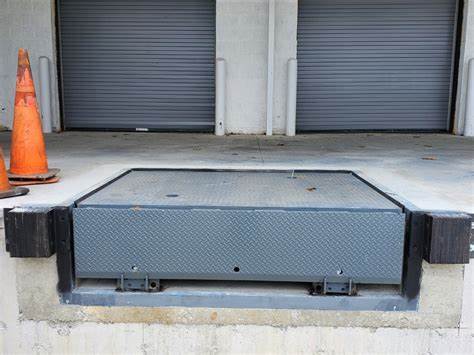
Dock levelers play a crucial role in the efficient loading and unloading of goods at your facility. They provide a smooth, safe, and seamless transition between your loading dock and the trailer, ensuring that your operations run smoothly and without interruption. Whether you’re managing a warehouse, a distribution center, or a manufacturing plant, choosing the right dock leveler can make all the difference in optimizing your material handling processes. In this comprehensive guide, we’ll explore the key differences between hydraulic and mechanical dock levelers, helping you make an informed decision that aligns with your specific business needs. Hydraulic dock levelers: how they work and their advantages Hydraulic dock levelers utilize a hydraulic system to raise, lower, and extend the platform, providing a smooth and controlled transition between the dock and the trailer. These systems are powered by an electric or a gas-powered hydraulic pump, which generates the necessary force to move the platform. One of the primary advantages of hydraulic dock levelers is their ability to handle a wide range of trailer heights, making them a versatile solution for facilities that receive a variety of vehicle types. Additionally, hydraulic systems offer a smooth and quiet operation, minimizing the disruption to your daily workflows. Hydraulic dock levelers also excel in terms of safety, as they typically feature built-in safety mechanisms, such as lip extension and retraction controls, to ensure a secure connection between the dock and the trailer. This helps prevent accidents and reduces the risk of workplace injuries. Mechanical dock levelers: how they work and their advantages Mechanical dock levelers, on the other hand, rely on a spring-loaded mechanism to raise and lower the platform. These systems are typically activated by the operator, who manually pulls a release chain or pedal to initiate the platform’s movement. One of the key advantages of mechanical dock levelers is their simplicity and reliability. These systems have fewer moving parts compared to their hydraulic counterparts, which can translate to lower maintenance costs and a longer operational lifespan. Mechanical dock levelers are also generally less expensive to install, making them a cost-effective solution for businesses on a tighter budget. Mechanical dock levelers are well-suited for facilities that handle a consistent range of trailer heights, as they may not offer the same level of flexibility as hydraulic systems. However, they still provide a safe and efficient means of loading and unloading goods, making them a viable option for many businesses. Factors to consider when choosing between hydraulic and mechanical dock levelers When deciding between hydraulic and mechanical dock levelers, there are several factors you should consider: Comparing the cost and maintenance requirements of hydraulic and mechanical dock levelers When it comes to the total cost of ownership, both hydraulic and mechanical dock levelers have their unique considerations. Hydraulic Dock Levelers: Mechanical Dock Levelers: It’s important to weigh these factors carefully and consider the long-term costs and operational needs of your facility when choosing between hydraulic and mechanical dock levelers. Installation and maintenance tips for hydraulic and mechanical dock levelers Proper installation and regular maintenance are crucial for ensuring the optimal performance and longevity of your dock leveler, regardless of whether it’s a hydraulic or mechanical system. Hydraulic Dock Levelers: Mechanical Dock Levelers: Regardless of the type of dock leveler you choose, it’s essential to follow the manufacturer’s recommendations for installation, maintenance, and troubleshooting to maximize the lifespan and performance of your equipment. Common misconceptions about hydraulic and mechanical dock levelers There are several common misconceptions surrounding hydraulic and mechanical dock levelers that are worth addressing: By understanding and addressing these common misconceptions, you can make a more informed decision when choosing the best dock leveler solution for your business. Choosing the best dock leveler for your specific needs When selecting the ideal dock leveler for your facility, it’s crucial to carefully assess your specific operational requirements and business needs. Consider factors such as the variability of trailer heights, the frequency and volume of loading and unloading activities, your budget, and the long-term maintenance and operational costs. Engage with dock leveler manufacturers and industry experts to gain a deeper understanding of the available options and how they align with your unique circumstances. This collaborative approach will help you make an informed decision that optimizes your material handling processes and delivers tangible benefits to your business. FAQs What is the difference between hydraulic and mechanical dock levelers? Hydraulic dock levelers operate using fluid-driven cylinders that raise and lower the platform with the push of a button, providing smoother and more efficient operation. Mechanical dock levelers rely on a system of springs, levers, and chains, requiring manual effort to engage or disengage, which can be more labor-intensive but cost-effective. What is the difference between pneumatic and hydraulic dock levelers? Pneumatic dock levelers use airbags to raise and lower the platform, offering a low-maintenance and environmentally friendly solution. Hydraulic dock levelers, on the other hand, operate using hydraulic fluid and cylinders, delivering precise control and smooth operation but requiring occasional maintenance of the hydraulic components. Do hydraulic dock levelers need power? Yes, hydraulic dock levelers require a power source to operate the pump that moves hydraulic fluid into the cylinders, enabling the platform to rise and lower. They are typically connected to the building’s electrical system, allowing for seamless operation at the touch of a button. How do I choose a dock leveler? When choosing a dock leveler, consider factors such as the load capacity, frequency of use, and operating environment. Hydraulic dock levelers are ideal for high-traffic docks requiring minimal manual labor, while mechanical and pneumatic options may be more suitable for lower traffic and budget-conscious operations. What is the difference between hydraulic and mechanical system? A hydraulic system relies on pressurized fluid to transfer force and generate movement, providing smooth and controlled operations. In contrast, a mechanical system uses physical components like gears, springs, or levers to transmit motion and force, often requiring more manual effort but less reliance on power sources. How does a mechanical dock
